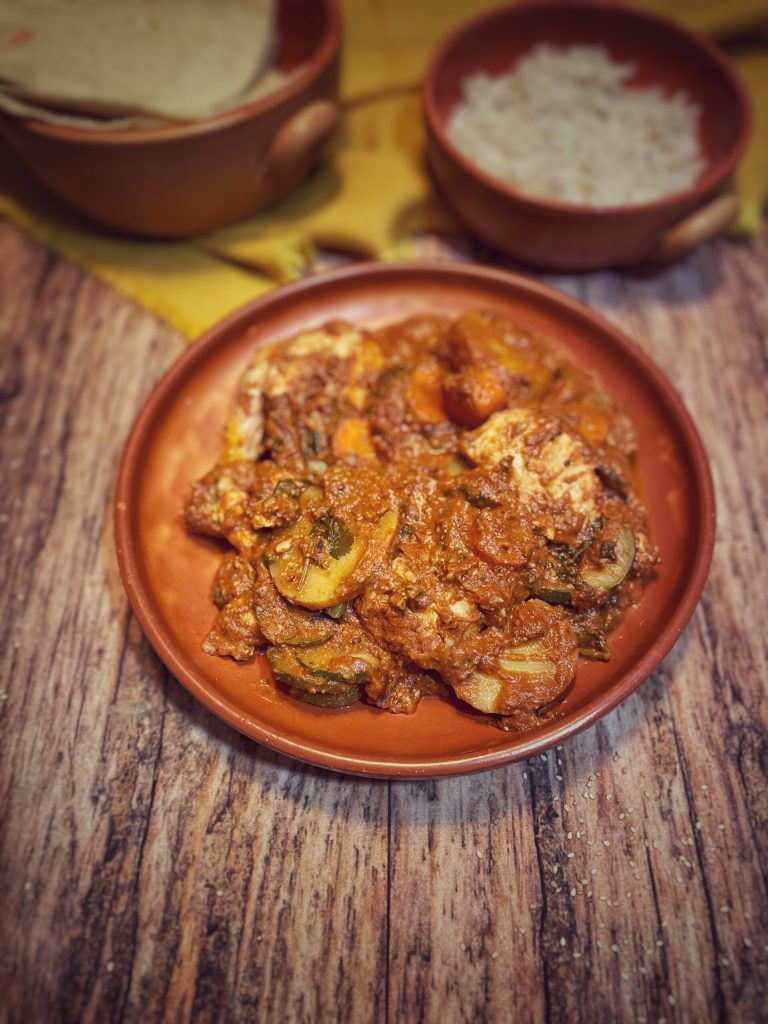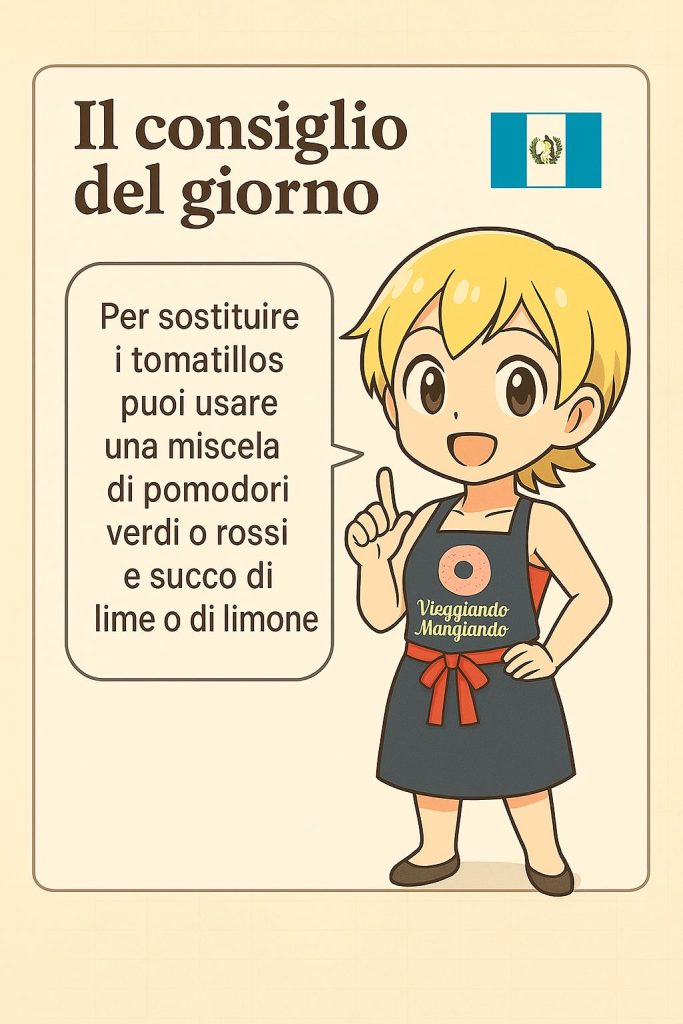➡️ Pepián is a meat and vegetable stew, and it is considered one of the oldest and most representative dishes of Guatemalan cuisine, with roots in the Maya-Kaqchikel peoples and later adaptations under Spanish influence.
➡️It was declared “Intangible Cultural Heritage of the Nation” in Guatemala with Ministerial Agreement 801-2007.
➡️It comes in various versions (“rojo”, “negro”) depending on the region, ingredients used (e.g., banana peel for pepián negro) and spices.
➡️In Guatemalan cuisine, the base of the recado (sauce) of pepián is a roasted and ground mixture of:
– Pepitoria = pumpkin seeds (in Spanish “semillas de calabaza”)
– Ajonjolí = sesame seeds
➡️These two ingredients are toasted without oil in a pan, then ground (traditionally with stone or mortar, now also in a blender) to form the thick base, creamy and rich in flavor of the dish. To this base are then added:
– Roasted tomatoes and tomatillos
– Toasted dried chiles (such as chile pasa and guaque)
– Whole spices
➡️This combination gives pepián its roasted, deep, and spicy flavor, typical of the *Maya and Mestizo* tradition of Guatemala.
➡️Chicken is very commonly used, but beef or pork can also be used, or a combination.
➡️The vegetables can vary depending on the season and region.

- Difficulty: Easy
- Cost: Economical
- Preparation time: 10 Minutes
- Portions: 6People
- Cooking methods: Boiling
- Cuisine: South American
- Seasonality: All seasons
Ingredients
- 4 lbs whole chicken
- 1.5 cups vegetable broth
- 3.88 oz sesame seeds
- 3.88 oz pumpkin seeds
- 2 dried chile guaque
- 2 dried chile pasa
- 1 cinnamon stick (1.2 inches)
- 3 cloves
- 21 oz Roma tomatoes
- 14 oz tomatillos (or miltomates)
- 1 onion
- 3 cloves garlic
- 17.64 oz potatoes
- 10.58 oz carrots
- 14 oz cayote (or zucchini)
- to taste coriander
- to taste salt and pepper
Steps
1. Cook the chicken cut into 5 pieces in salted broth for 10 minutes. Set it aside, keep the broth.
2. Toast sesame seeds, pumpkin seeds, dried chiles, cinnamon, cloves, and pepper in a pan without oil until fragrant.
3. In the same or another pan, roast tomatoes, tomatillos, onion, and garlic until they begin to brown.
4. Blend (or grind) the toasted ingredients + and blend also the roasted ones with some of the broth until you get a smooth sauce.
5. Pour the two sauces into a pot, add the cut meat and vegetables, adjust salt, and cook over medium-low heat until the vegetables are tender and the sauce has thickened (about 20 minutes).
6. Finally, add chopped coriander. Serve hot, accompanied by white rice and/or corn tortillas.
Whole chicken or pieces?
In the traditional Guatemalan pepián recipe, whole chicken cut into pieces is often used because the broth and meats from different parts give more flavor to the sauce and final dish.
However, many variants use only chicken thighs or drumsticks because they are tastier and remain more tender during cooking.
Therefore:
• Whole chicken in pieces is the most traditional and complete version.
• Thighs or drumsticks are a more practical and widespread version, easier to handle, and still tasty.
It also depends a bit on regional use and personal preferences.
If you want to respect authentic tradition, better the whole chicken cut.
If you want a faster and easier version, use only thighs.
FAQ (Frequently Asked Questions)
How can I replace tomatillos?
Advice from ViaggiandoMangiando
If you can’t find tomatillos (miltomates), which have a tangy and slightly citrusy flavor, you can replace them with:
• Unripe green tomatoes (preferably a mix between green tomatoes and a bit of lemon or lime juice for acidity)
• Or fresh red tomatoes + some lime or lemon juice to replicate the typical tomatillo acidity.
The idea is to maintain that fresh, slightly tangy note that tomatillos give to the dish.
So, for 4 tomatillos (~400 g), use about:
• 300-350 g of unripe green tomatoes or fresh tomatoes
• 1-2 tablespoons of lime or lemon juice
This will help balance the flavor while maintaining the characteristic tartness of pepián.
How can I replace dried chile guaque and dried chile pasa?
If you can’t find dried chile guaque and chile pasa, you can replace them with other Mexican or Central American dried chiles with a similar flavor:
• Chile guaque has a smoky, sweet, and slightly fruity taste.
You can replace it with: Ancho chili (dried jalapeño) or Pasilla chili. Chile pasa is slightly spicier and smoky.
You can replace it with: Dried Chipotle or Mulato chili.
The important thing is to maintain a mix of chiles with a smoky, sweet, and moderately spicy taste to recreate the authentic aroma of pepián.
If you use different chiles, toast them slightly to enhance their flavor.

